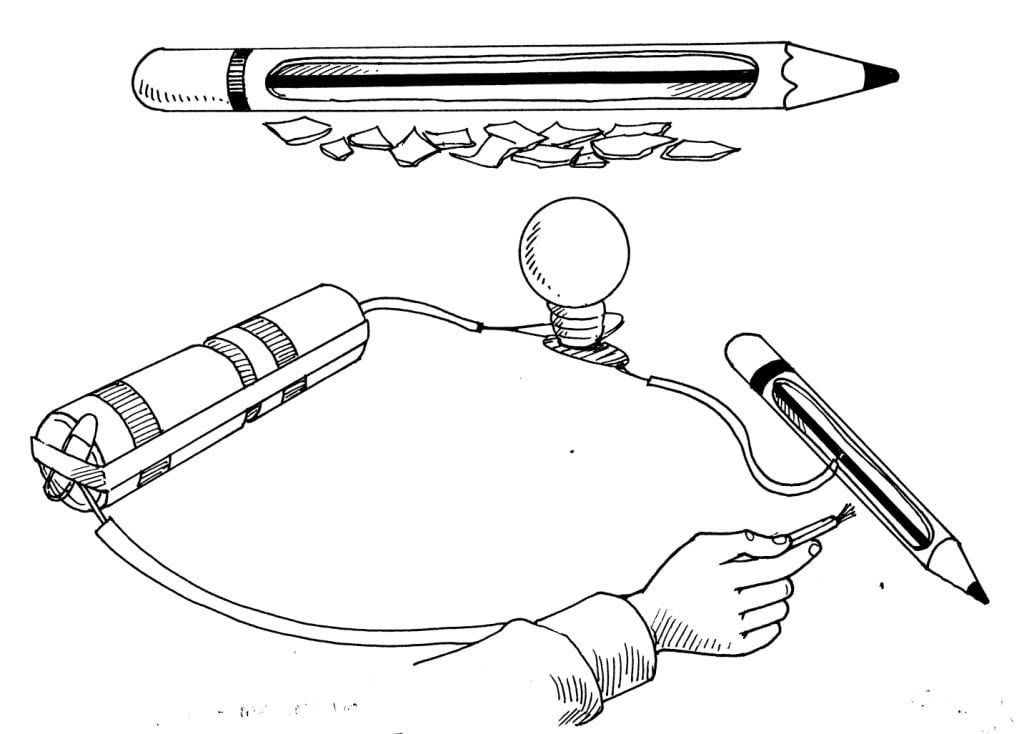
Dimmers are great devices. Some of these circuit components are attached to ceiling lights or floor lamps. As you rotate the dimmers knob, the light gets brighter or dimmer.
Things Required:
Pencil (or just a piece of pencil lead AKA graphite)
Two “D” cells in battery holders
One torch bulb in lamp holder
Connecting wires with each end stripped 1½ inches bare of insulation
Directions:
Ask an adult to use a wood-carving tool in order to shave down one side of a pencil so that a long length of graphite may be exposed. It should look like this:
If you can’t find an adult to do the carving, do not do it yourself! Instead, you can use a piece of graphite that’s meant for use in refillable pencils.
Assemble the circuit below.
Touch the bare ends of the two wires together and the lamp should light. If not, check your connections. Now place the ends of both tester wires against the graphite. What happens? Slowly, move these wires farther apart along the length of graphite. What happens to the brightness of the lamp? Can you explain your observations? Predict what will happen if the wires are moved together. Find out if your prediction is correct.
This Is What Happens:
Unlike copper, graphite isn’t a good conductor of electricity. When electricity flows through graphite, it crashes “head-on” into resistance. This resistance cuts down on the flow of electricity.
When your circuit included only a small section of graphite, the lamp remained bright. As the wires were drawn apart, the current was forced to travel a greater distance through the graphite path. This extra distance produced increased resistance, which cut down the electricity and made the bulb dimmer.

